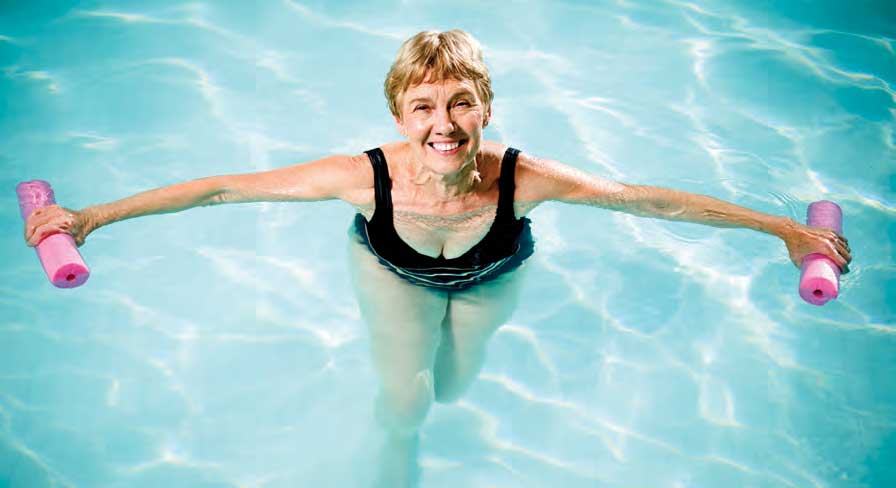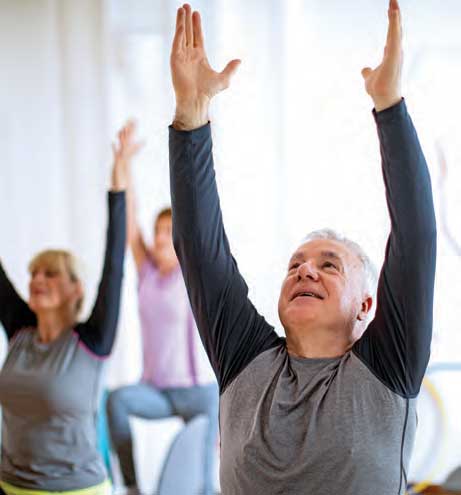
Much research goes into the “science of exercise” and scientists have realized it doesn’t require long sessions of sweat-breaking exercise to make improvements in your health, endurance, and strength.
Each session of exercise stimulates some form of change in every body system including countermeasures for the negative effects of arthritis and protection from symptoms of other chronic diseases. The CDC recommends 150 minutes a week of moderate level exercise like brisk walking to benefit your health and help prevent disease. Dr. Zhen Yan, professor of medicine reports that his research shows exercise can prevent and even reverse the damage of Type 2 diabetes and heart disease as well as arthritis. Exercise improves circulation and removes cellular waste which is linked to tissue damage associated with many chronic diseases. Essentially “Exercise takes out the trash.” Exercise reduces levels of proteins in the blood that cause inflammation that results in painful swollen joints, improving function and reducing pain.
Exercise actually does produce more energy by increasing “organelles” that create energy at the individual cell level especially in the skeletal muscles, improving circulation and empowering brain and muscle cells. So on those days when you feel so-o-o tired, gentle to moderate exercise can boost your energy level.
Exercise improves balance in several ways: improving communication between joints and brain by increasing the awareness of where the joint is in space. Chair Yoga‘s slow controlled movements promotes “motor learning” improving smooth and precise motions thus improving balance.
Aerobic exercise (water aerobics) strengthens the heart muscle and keeps the circulation flowing through healthier veins and arteries. Better circulation means better oxygen flow to cells in the brain, organs, and muscles. Also stimulating muscle cells to build stronger fibers helps the heart to pump more powerfully and more efficiently. Keeping arteries and veins more elastic will prevent arterial stiffening that result from unhealthy eating or aging which lowers the risk of heart attack or stroke.

Weight–bearing exercise (walking) keeps joints healthy: strengthened muscles relieve pressure on supporting tendons and ligaments. In other words, the muscle acts as a natural brace. Strengthening core muscles helps support the back, reducing back pain. Stronger muscles absorb the normal jarring of weight-bearing exercise by nourishing and thickening the cartilage inside the joints.
Rhythmic exercises (line dancing, NuStep and walking) soothe the nerves while producing natural hormones called endorphins that give a happy feeling which helps relieve depression, anxiety, and chronic pain.
Prove it for yourself. Join one of the many exercise classes and/or use the equipment in the Oasis available here at Kirby Pines.
It does not matter how slowly you go as long as you do not stop.”
– Confucius





 © 2025 Kirby Pines LifeCare Community. All Rights Reserved |
© 2025 Kirby Pines LifeCare Community. All Rights Reserved | 